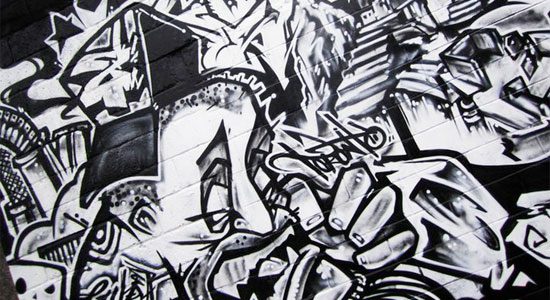Toronto will be getting a new paint job starting this summer.
The city’s new StreetARToronto (StART) program is aiming to put up wall murals to add flavour and character to many of its neighbourhoods. These may be done as graffiti, stencil, mosaic, projections or other techniques.
“We want them to be innovative and when you walk around the city and see the different murals, we want you to get a feeling for that community,” said Lilie Zendel, manager of the StART program. “We aim to revitalize our neighbourhoods and in the process encourage discussions on street art.”
The first round of projects is set to be approved following the application deadline on April 30, realized over the summer and must be completed by Oct. 26.
Toronto has a lot of talent that has not been seen.
—Angel Carillo
Experienced local graffiti artist Angel Carillo said he welcomes the new approach and thinks it could inspire taggers to become graffiti artists.
“The program offers an opportunity to showcase Toronto’s most creative, not just in graffiti,” he said. “Toronto has a lot of talent that has not been seen.
“I am especially excited about collaborations between different styles such as graffiti.”
StART has the potential to boost Toronto’s tourism appeal, Zendel said.
“We are currently enhancing our website where by the end of the year we will have catalogued all the mural art in the city,” Zendel said. “Then, if tourists interested in street art come to town, they’ll be able find them, see the artist who did it and when it was put up. They can then do a walking tour.”
Even though the program is meant to support the local graffiti scene, it does not fund artists directly. Instead, it funds projects through organizations which have to have at least half of the cost covered. Approved projects will then receive up to $20,000 in city funding.
A critical component of the application process is that five per cent of the budget must be allocated to maintaining the artwork for at least five years after its completion.
“We want to show how much we value the work by making sure that it’s well maintained,” Zendel said.
However, increasing the city’s tourism appeal is just a happy side-effect of the project’s main goal.
“The truth is that really we are going after tagging more than anything else,” Zendel said.
A new graffiti bylaw recognizes authorized graffiti murals in the city as a legal art form whereas tagging remains an illegal act of vandalism.
“We discovered that many artists are really proud of their work and if it gets tagged, they are usually very committed to cleaning it,” Zendel said. “Also, we equally experience that there is a certain amount of respect that graffiti artists have for each other’s work.
“It’s not an absolute deterrent, but graffiti art makes tagging far less of a problem.”
Organizations like Metrolinx are taking notice, too.
“Especially for high traffic areas, Metrolinx now has funds allocated for mural art so we’re hoping to work together,” Zendel said. “We hope we’ll be a catalyst for them addressing their [graffiti vandalism] problems.”

